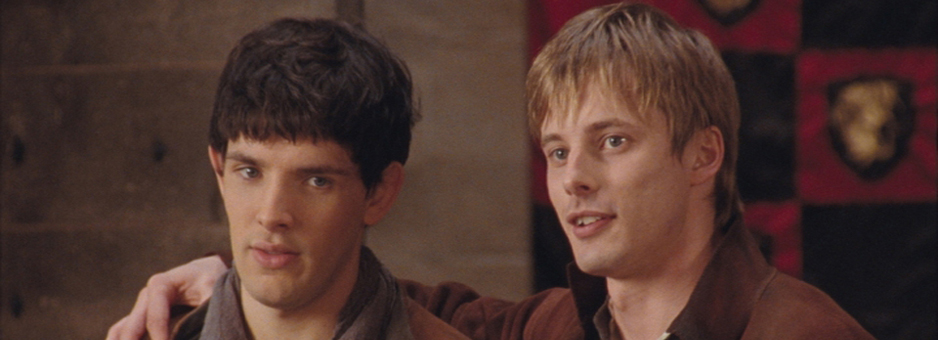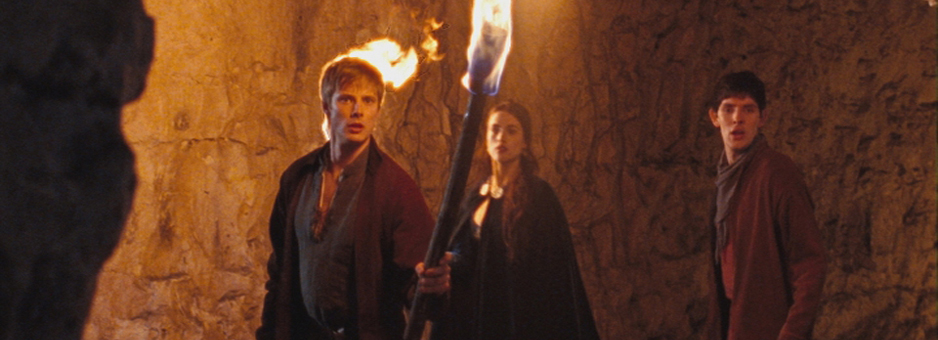Mill TV Taps Baselight to Work Magic for BBC's "Merlin"
The Mill, London
The legendary kingdom of Camelot, complete with its fire-breathing dragons, winged griffins, sword-wielding knights and "youthful" sorcerer, is brought magically to life in Merlin, a new family-oriented drama produced by Shine for the BBC. The show, which tells the story of the Arthurian wizard's younger days, debuted recently on BBC ONE and is scheduled to premiere in January on NBC, USA.
Post work is being conducted at Mill TV in London. The effort includes the production of numerous CG effects—including a talking 3D dragon voiced by actor John Hurt. Setting the final look for the series is Colourist Mick Vincent, well known for his work on Dr. Who; Vincent is performing the grade using FilmLight's Baselight EIGHT.
In terms of production values Merlin rises to the level of a Hollywood blockbuster—visually it is stunning—but the show's delivery schedule has the frenetic pace of a conventional television drama, and meeting it requires an intensive effort from Mill TV's staff. Part of what makes it possible to achieve such spectacular results so quickly is the company's pipeline, which was originally designed for features work. For Merlin, the show's Super 16mm production footage is scanned to 2K 10-bit log and then down rezzed for visual effects and grading. As scanned elements are stored on a central SAN, Vincent can proceed with final grading even as visual effects work is still ongoing. When new CG elements are ready, they are simply dropped into the timeline.
"It is a very elegant way to work," Vincent explains. "I can be grading a shot and a new shot might appear while I'm working. Sometimes it's a work in progress. Sometimes it's a finished composite. We are dropping in visual effects shots right up to the end." As an indication of the complexity of the post work, Vincent notes that the editorial timeline for an average 1-hour episode of Merlin might include 1000 to 1200 events.
Much of Vincent's time is spent in using Baselight's toolset to ensure a seamless blend of visual effects and live production elements. Again the flexibility of Baselight and Mill TV's pipeline allows that work to be done with great efficiency. An individual shot might, for example, include a CG dragon, a digital matte painting and green screen live action, and Vincent might find it advantageous to work individually on the various matte elements used to produce the composite.
"All I have to do is call upstairs to visual effects and the relevant mattes can be published and available to me almost instantly," he recalls. "I can then blend it all together which takes just a few minutes to do."
Vincent is also responsible for finalising the show's overall look and keeping that look consistent across an individual episode and the series' entire 13-episode season. The producers originally decided to shoot the series on Super 16mm in order to give it a filmic look and because the format lends itself well to working quickly and action shooting. But Super 16mm also requires special handling in post-production.
"We are shooting a very fast schedule and as a consequence, a lot of the material needs work in post-production to enhance the look," explains Julian Murphy, Creative Director for Shine's Drama Division. "We work those images quite hard in Baselight to give it the consistency we need."
The look itself could be described as a type of heightened realism. Murphy calls it a "consciously glossy" look that again is meant to recall a feature and distinguish Merlin from other television dramas. To achieve that look, Vincent applies a Baselight function called "print emulation," which is actually intended as a preview tool for film projects. "It results in a period look, but without making it look like a period drama," Vincent asserts. "It works really well with the textures of the art direction and everything else that is going on."
The results are astonishing, according to Murphy, and a clear contributor to the series' initial success. Murphy added that Baselight's creative toolset, combined with its ability to efficiently manage all of the effects elements, and the sheer volume of work is truly impressive. "I have never worked with a grading tool that offers so much control," he concludes. "I'd feel uncomfortable doing this show without it."





